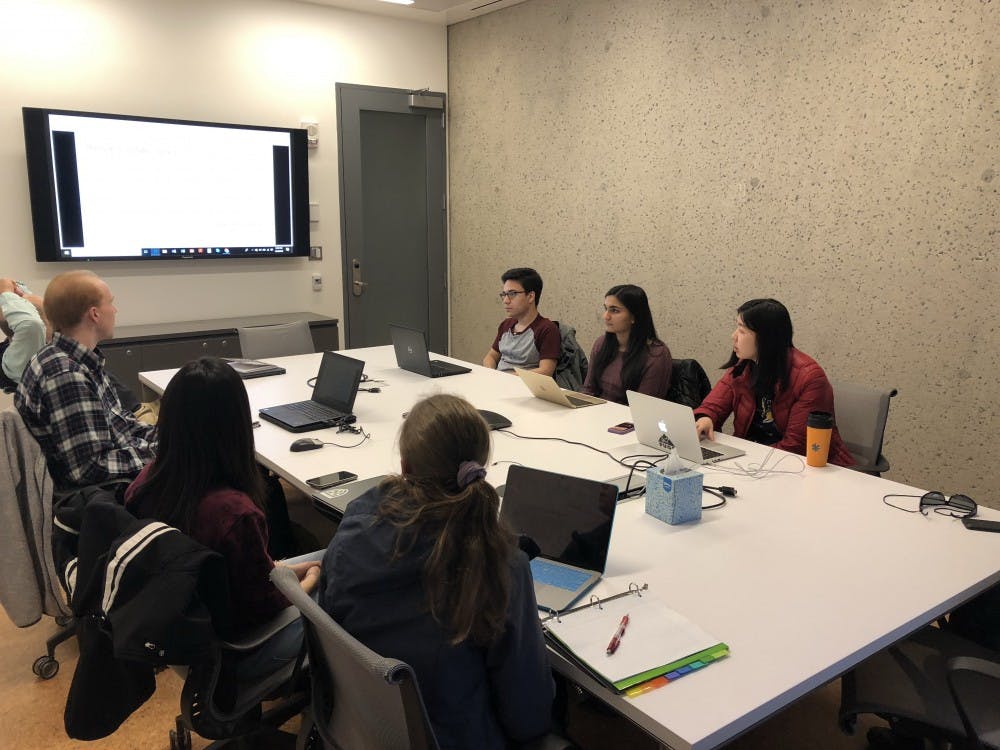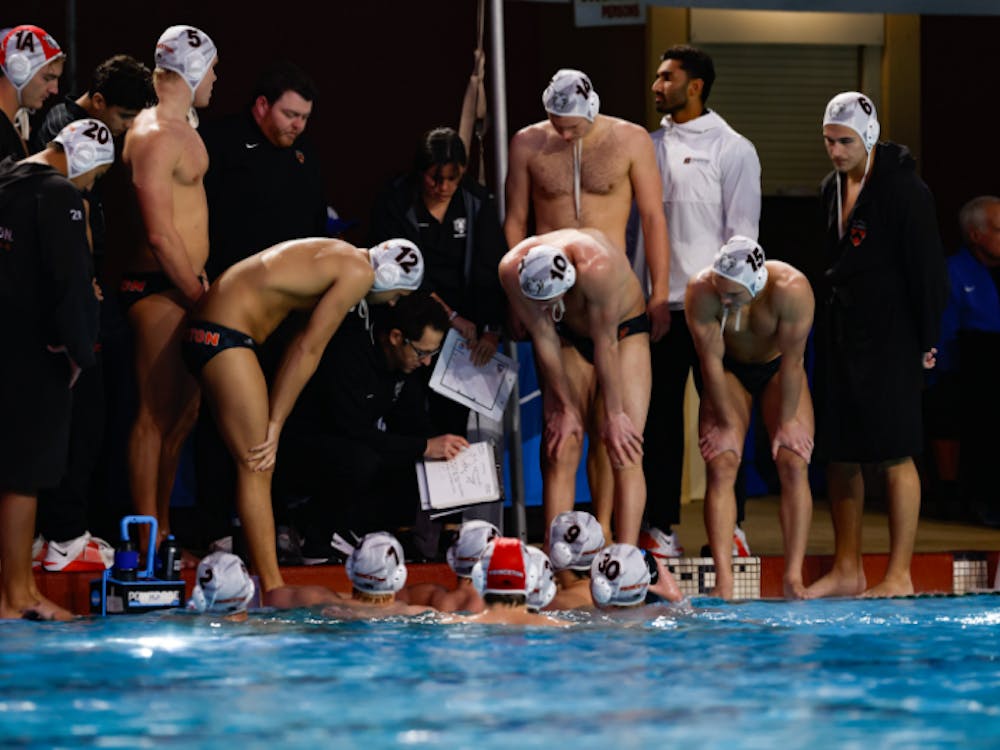Since fall 2018, University students have been collaborating with the town of Princeton on a Climate Action Plan to reduce greenhouse gas emissions.
The Climate Action Plan (CAP) was initiated as part of the town Council’s 2017 goals and objectives. A major aim of the CAP is to reduce greenhouse gas (GHG) emissions in Princeton from a 2010 baseline of approximately 433,000 metric tons of CO2 emissions.
Intermediate and long-term goals are still being determined.
Although the town released a broadly focused Sustainability Plan in 2009, Princeton has yet to implement a detailed strategy for reducing GHG emissions and improving climate change resiliency. The CAP, expected to be presented to the Council in summer 2019, will include specific actions that the municipality, with a population of about 30,000, can take to reach its goals.
To oversee development of the CAP, the town established a Steering Committee and five working groups, focusing on energy, resiliency, natural resources, land use and transportation, and materials management.
Sustainable Princeton, a local nonprofit, is also collaborating with the municipality on developing the CAP. In Sep. 2017, the group received a $100,000 grant from the Robert Wood Johnson Foundation to further its efforts.
Eric Larson, Senior Research Engineer at the Andlinger Center for Energy and the Environment, joined the Steering Committee in fall 2018. At the time, Sustainable Princeton and the Committee were seeking assistance to quantify the impacts of proposed actions, so seeing an opportunity for student involvement, he reached out to former student Will Atkinson ’18.
“There didn’t seem to be an active group within the action plan doing the kind of analysis the students are doing now,” Larson said.

Atkinson currently works locally under a PACE Center High Meadows Fellowship and was eager to help. He recruited a group of undergraduates, graduate students, and high school students from the Princeton Student Climate Initiative (PSCI), Princeton Citizen Scientists, and Princeton High School (PHS). Together, they formed the Climate Action Plan Emission Reduction Strategies team — CAPERS for short.
Individual members of the team work on small research projects, crunching the numbers to consider the environmental impact of changes like increasing public transportation or installing electric vehicle charging stations. The team holds weekly meetings to discuss progress and presents findings to the Steering Committee once a month.
For the students, working on the CAP has been a way to translate skills learned in class to real-world problems.
“This project has been a cool way to put the research skills that I’ve developed from independent work into practice for a societal purpose,” Atkinson said. “It combines the interests I have, the skills that I’ve developed here, and the answers that the town needs.”

Meanwhile, the town and Sustainable Princeton benefit from the quantitative analysis done by the students, Sustainable Princeton program director Christine Symington said.
“The CAPERS team has been helping us quantify what the emissions-reduction potential is, as well as the financial cost and other co-benefits,” including improving equity, energy efficiency, or increasing renewable- energy resources, Symington explained.
Larson echoed Symington’s sentiments, praising the students for their contributions.
“The plan is going to be much better informed by the work the students do,” Larson said.
Symington and Larson serve as advisors on the CAPERS team, acting as liaisons between the students and the Committee. To guide the team, they recommend methodologies, provide examples, and suggest possible data sets to use in their analysis.
Atkinson, as the CAPERS team coordinator, works on synthesizing the research and crystallizing the town's questions into new projects. He is also investigating the GHG contributions from residential buildings in Princeton.
Atkinson is considering the use of incentives, such as rebates from the New Jersey Clean Energy Program, in encouraging energy-efficient practices.
The team makes use of software from ICLEI, a network of local and regional governments working towards sustainability, to crunch the numbers and evaluate their data. Although it can be difficult to find the right figures, it’s important to the team to make predictions as accurately as possible.
“Each number matters,” Atkinson said. “Each number is a careful estimate that does take time to find and develop and get right.”
Clare Martin ’21, who became involved with CAPERS after working with PSCI last year, is researching the impact of electric-vehicle ownership on reducing emissions. Martin is also evaluating the installation of electric-vehicle charging stations in places like the Spring Street Garage or multi-family units.
Martin was particularly interested in the CAP because of its local impacts. Unlike state or national policy, Martin said, the CAP could bring about more immediate transformations.
“I’m hoping that I’ll be able to witness change in this town already by the time I graduate. That would be very rewarding,” Martin said.
The CAPERS team also includes graduate students and a student from PHS.
Rebecca Elyanow GS and Logan Stafman GS are researching the implementation of the Bicycle Mobility Plan, a 150-page report on the “state of biking” in Princeton released by the town, in 2017. Although the CAP discussed the potential for additional bike lanes, such as a planned dedicated bike lane on North Harrison Street, much of it has not been implemented, Elyanow said.
She and Stafman estimated that implementing the Plan could result in a 2.2-fold increase in bikers in Princeton. This could help the town reach its CO2-emissions goals, which they will investigate next in their research, Elyanow said.
Anika Sonig, a senior at PHS, is researching transportation scenarios that could result in reduction of GHG emissions — such as if 50 percent of people carpooled or if the FreeB bus service was expanded. Sonig is particularly interested in public-school bus transportation and how it could be improved by using electric vehicles or altering routes.
Sonig has been a member of PSCI for two years and invited the group to come speak at her high school. For Sonig, this project has been meaningful because of its tangible impact on the community she is directly a part of.
“Since I’m part of the high school, and I’m researching the high school, I feel like I would be able to make a huge impact on my own community,” Sonig said. “We can all have an impact, even as students. We can all do something.”
Larson, the CAPERS team advisor, believes that the students benefit from seeing the practical implications of their work.
“The students are getting a sense of what the real world is like,” Larson said. “Typically, in the classroom, you’re in the hypothetical realm, but now, we’re having to think about very concrete things. They’re learning something about it as they go.”
Larson believes that the burden for addressing climate change has shifted to the younger generation, but that the CAPERS team has taken up the challenge.
“It’s gratifying for me to see students so engaged in trying to help,” Larson said.
Beyond the intrinsic motivation provided by the students’ enthusiasm, Symington also finds their collaboration skills humbling and admirable.
“It’s been not just great to see their eagerness, excitement and talent — it just feels good to collaborate with students,” Symington said. “To see them in action is really rewarding.”
A draft of the CAP is planned for submission in April for comment from the public. The plan will then be submitted to the Council for final approval. Once the plan is approved, it will require continued monitoring and evaluation as actions are implemented.
“We hope that this is not the only instance where we can collaborate with students,” Symington said of the future of the CAP and the town’s partnership with the CAPERS team. “When it comes to implementing the Climate Action Plan, we hope that there will be opportunities to continue on with this group of students.”








